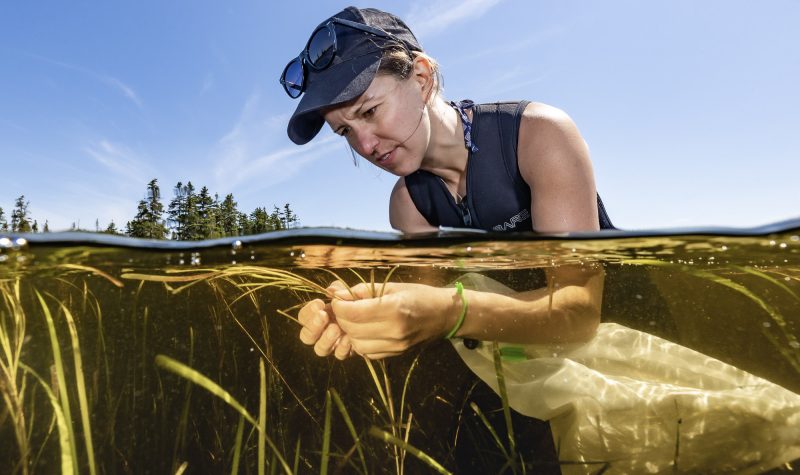A pilot project to protect eel grass along part of the coastline in Port Medway got underway this summer.
While the process is established in other parts of the world it is relatively new to Nova Scotia. Eel grass conservation technician with the Ecology Action Centre Aaron Clausen says eel grass is vitally important as part of a healthy marine ecosystem.
“It’s kind of hard not to overstate the importance of eel grass… kind of hard not to overstate the importance and the benefits that eel grass meadows provide both to the environment and just humans. First and foremost, they provide a great deal of support to our fish populations and commercial fisheries. They create tons of structural habitat for a lot of these species and an area for kind of juveniles as a nursery ground, things like lobster, eel, salmon, and some shellfish,” said Clausen.
“Additionally, they improve water quality, oxygenates the water column, remove toxins, excess nutrients and increases clarity and eel grass meadows also protect our Coastline it can dampen strong waves, buffers the shoreline from storm surges and this all helps to slow coastal erosion.”
Clausen says the small aquatic plant could also be part of a solution to a global problem.
“And the last thing that we still don't really have a great concept of the extent that eel grass can help at least in Nova Scotia, but it captures and stores carbon from the atmosphere in these sediments so it’s potentially a nature based solution.”
The site was selected after a local property owner notified the Ecology Action Centre of dead eel grass washing up on their shore. Teams from the Ecology Action Centre and Dalhousie University’s Future of Marine Ecosystems Lab partnered to determine which methods work best to restore eel grass in Nova Scotia. Over 6,000 seed, 250 shoots and 25 sods were transplanted from a donation site to the Port Medway location.
Clausen says they’re hopeful the techniques used in Port Medway can be applied to restore eel grass at other locations in Nova Scotia and beyond.
“One of the main goals of this project is to find a, if there is a way that works and b, if it’s a scalable method," said Clausen. "Obviously, you want to do as much of this as possible especially with all of the great benefits that eel grass provides. You want to upscale it quickly.”
The Ecology Action Centre has set up a site where citizen scientists can help track the location of eel grass across the province.
Input from everyday Nova Scotians will be added to a map of eel grass meadows that will help government, academic researchers and other non-profit and community groups monitor the location and conditions of the meadows.
Follow this link to learn more about the eelgrass mapping project.
Clausen says the team will continue monitoring the eel grass transplant site late into the fall and will return in the spring.
E-mail: edhalversonnews@gmail.com
Twitter: @edwardhalverson
To listen to the broadcast of this story, press play below.


